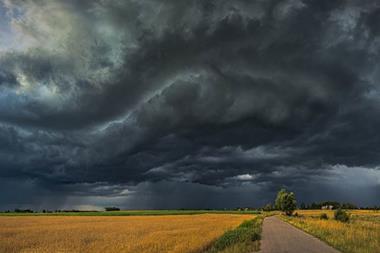‘I’ve yet to see a board of trustees that has made significant changes to its asset allocation as a result of scenario analysis,’ says Julis Pursaill at Cushon
The snappily named Task Force on Climate-Related Financial Disclosures, or TCFD, requires trustees to perform scenario analysis on their investment strategy to help them understand how robust their strategy might be under different global warming scenarios.
As with any piece of analysis, for it to deliver value, it must generate actionable insights. In this case, it should help trustees adapt their investment strategies to better deliver good member outcomes. So, how does most current climate-related scenario analysis deliver against this test? It doesn’t!
What is going wrong?
The vast majority of climate scenario analysis undertaken by trustees relies on integrated assessment models. These models purport to offer granular predictions about the likely behaviour of asset classes decades into the future under different warming scenarios.
One of their core failings is that none of these integrated assessment financial models can incorporate the non-linear effects that dominate the equivalent climate models.
This is where we need to understand the potential likelihoods and impacts of climate tipping points. This could be the rapid acceleration in warming that will result from the release of methane from melting permafrost, or from the loss of reflective ice in polar latitudes, or rising temperatures increasing the moisture content of the air, which in turn traps more heat.
The absence of any of these potentially serious tipping points and feedback loops in integrated assessment models means that their output may significantly understate the impact of both transition and physical risks on GDP and on asset values. Indeed, most such models now carry disclaimers to that effect.

Scenario-analysis is understating climate impact
But even with these disclaimers, the impact of this potential understatement of the impacts on investment outcomes can be damaging.
Faced with difficult decisions about, for example, losing some diversification in the short term – perhaps by reducing exposure to fossil fuel revenues – in order to reduce the likelihood of negative outcomes decades hence, becomes a much harder decision for trustees to take, if the negative outcomes caused by warming are predicted by the scenario-analysis to be modest, as typically happens.
But the reality is that it’s very hard to reconcile these modest impacts on asset class returns from financial models with the predictions of 60% reductions in GDP that come out of many climate models.
Current modelling a “waste of time”
I’ve yet to see a board of trustees that has made significant changes to its asset allocation as a result of scenario analysis. On the plus side, I do see changes being made within asset classes to improve investment resilience under different warming scenarios, both in the form of climate tilts and in climate impact strategies.
And this generates some questions. Are these changes being driven by the output of these integrated assessment models? Do trustees understand the extent to which their climate strategy has successfully mitigated transition and physical risks and what exposure remains in the portfolio?
Again, no, because integrated assessment models are top-down models, which only assess the possible impact (probably understated and with spurious accuracy) of warming scenarios over the long term at the asset class level. They provide no actionable output to help inform investment strategy within asset classes over shorter time frames.
These failings led the climate-conscious CIO of one master trust to observe in a recent conversation that “scenario analysis is a complete waste of time”. It currently is, and can even be counterproductive, but it doesn’t need to be.
We need a radical new approach
We need to develop new multi-decade, top-down approaches which incorporate the many tipping points climate models imply and generate output that recognises the likely impact on asset values that these tipping points might reasonably be expected to deliver.
In parallel, we need to develop new shorter-term, bottom-up approaches which assess the likely exposure to physical- and transition-risk at the individual position level within asset classes. Only then will scenario analysis generate actionable insights for trustees.
If scenario analysis fails to deliver actionable insights that lead to improvements in the climate resilience of investment strategies (which are thus better able to deliver adequate standards of living in retirement for our members), then it will remain part of the problem.
A radical new approach is needed to ensure it becomes part of the solution.


















No comments yet